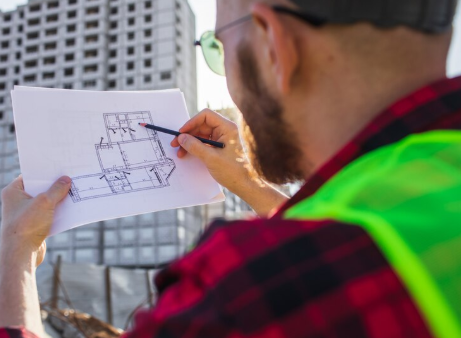Construction projects, whether residential, commercial, or industrial, require precise planning and execution. From groundbreaking to final inspection, every phase of construction must follow a strict timeline and high-quality standards. That’s where construction scheduling services and steel shop drawings come into play. These essential tools help ensure that projects stay on schedule, meet code requirements, and are completed within budget.
In this blog post, we’ll dive into the importance of both services and explain how they work together to improve construction outcomes.
Understanding Construction Scheduling Services
Construction scheduling services are specialized project management services that focus on organizing, coordinating, and controlling project activities through well-structured schedules. These services involve breaking down a project into manageable tasks and assigning timeframes to each one.
A professional scheduling service takes multiple variables into account:
- Labor availability
- Material deliveries
- Permit approvals
- Weather conditions
- Equipment scheduling
- Subcontractor timelines
Modern construction scheduling is typically handled using software like Microsoft Project, Primavera P6, or Buildertrend. These platforms help project managers visualize the full scope of the job, identify critical paths, track milestones, and adjust timelines when unexpected changes arise.
Benefits of Construction Scheduling:
- On-Time Delivery
Prevents missed deadlines by keeping all teams aligned with project goals. - Budget Control
Reduces costly delays and idle labor time. - Better Coordination
Enhances communication between contractors, subcontractors, and suppliers. - Real-Time Adjustments
Allows managers to adapt quickly when changes occur, without derailing the project. - Improved Resource Management
Ensures materials and labor are used efficiently across the job site.
What Are Steel Shop Drawings?
Steel shop drawings are highly detailed and specialized diagrams created by drafters or detailers. These drawings show how steel components should be fabricated, assembled, and installed in a structure.
Unlike general construction drawings, shop drawings are focused on individual components — such as beams, columns, trusses, and connections — and provide exact specifications for steel fabricators and erectors.
Steel shop drawings typically include:
- Dimensions and tolerances
- Weld and bolt locations
- Connection details
- Steel grades and finishes
- Anchor bolt placement
- Fabrication notes
They serve as a bridge between the engineer’s design intent and the fabrication floor, ensuring that the steel is manufactured and installed accurately.
Why Steel Shop Drawings Matter
Steel is the backbone of most commercial and industrial buildings. Without precise steel shop drawings, fabricators are left guessing, which can lead to expensive rework or delays.
Key Advantages of Steel Shop Drawings:
- Improved Accuracy
Every component is drawn to exact specifications, reducing the risk of error during fabrication. - Efficient Fabrication and Assembly
Detailed instructions speed up production and allow erectors to install components without confusion. - Code Compliance
Shop drawings are created in accordance with AISC and other local building codes. - Smooth On-Site Installation
Accurate drawings minimize site conflicts and reduce downtime during erection. - Better Collaboration
Shop drawings help architects, engineers, contractors, and steel fabricators stay on the same page.
How Construction Scheduling and Steel Shop Drawings Work Together
While construction scheduling services and steel shop drawings serve different purposes, they are interconnected in many ways. The success of a steel structure depends not only on the quality of the drawings but also on how well the timing is managed throughout the process.
Here’s how they complement each other:
- Timely Approvals:
Steel shop drawings must be reviewed and approved by engineers and architects before fabrication. A construction scheduler ensures this process is planned early enough to avoid bottlenecks. - Fabrication Timeline:
Scheduling services help determine when to start steel fabrication based on site readiness and delivery dates. - Sequenced Installation:
Shop drawings provide details for individual steel pieces, while the construction schedule dictates when and where those components are installed. - Avoiding Delays:
When shop drawings are completed and integrated into the project schedule, teams can anticipate potential issues and resolve them proactively. - Coordination with Other Trades:
Steel erection must be coordinated with concrete work, plumbing, HVAC, and electrical. A solid construction schedule ensures no trade interferes with another, and steel drawings clarify where all components fit.
Choosing the Right Partner for Your Project
Whether you’re building a high-rise, a warehouse, or a commercial plaza, having the right professionals on your side makes all the difference.
Look for a provider that offers:
- Experience with large-scale projects
- Certified drafters and detailers familiar with AISC standards
- Expertise in project scheduling tools
- Strong communication and collaboration skills
- Fast turnaround times and accuracy in shop drawings
Final Thoughts
In today’s construction environment, precision and timing are non-negotiable. That’s why construction scheduling services and steel shop drawings are two of the most valuable tools you can invest in. They help you reduce risk, increase efficiency, and deliver your project on time and on budget.
Whether you’re working on a new build or a renovation, make sure your team is supported by professionals who can handle both the planning and technical detailing. That’s the foundation of a project done right.

































